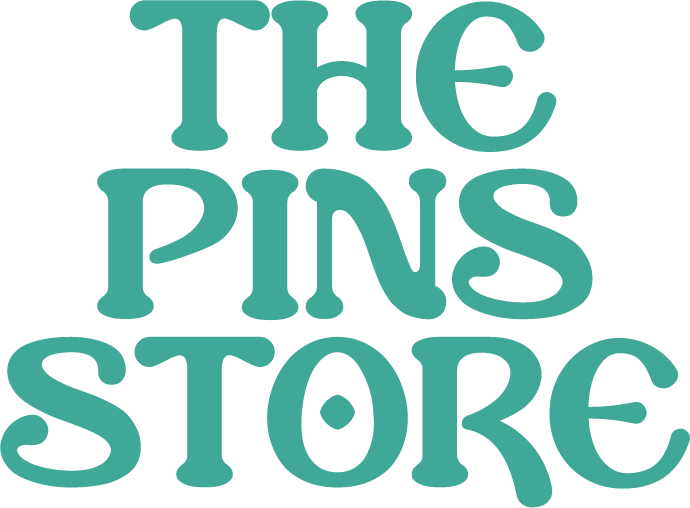Introduction
Custom pin accessories are small, personalized items designed for decorative or symbolic purposes. They come in various shapes, sizes, and materials, and can be customized to reflect a specific message, brand, or identity. Here’s a comprehensive overview of everything you need to know about custom pins accessories:
Types of Custom Pins
Enamel Pins: These are among the most popular custom pins, known for their vibrant colors and polished appearance. They have a smooth, hard enamel surface.
Soft Enamel Pins: These pins have a textured surface and are less smooth than hard enamel pins. They are often more affordable and offer a different aesthetic.
Die-Struck Pins: These pins have a raised metal surface and are usually without enamel. They are often chosen for a more classic and minimalist look.
Lapel Pins: Commonly worn on the lapel of a jacket or suit, these pins are often used for branding, recognition, or as accessories.
Design Process
Conceptualization: Start by brainstorming ideas for your custom pin.
Artwork Creation: Design the pin using graphic design software. Pay attention to details such as colors, shapes, and any text that will be included.
Create a digital mockup or a physical prototype to visualize how the pin will look before mass production.
Materials
Metal: Common materials include brass, copper, iron, or zinc alloy. Each metal has its characteristics and can affect the appearance and durability of the pin.
Enamel: Hard and soft enamel are popular choices for adding color to pins. Hard enamel provides a smooth, polished finish, while soft enamel has a textured surface.
Customization Options

Size and Shape: Pins can be created in various sizes and shapes, allowing for a high degree of customization.
Attachments: Choose from various pin backings, such as butterfly clasps, rubber clutches, or magnetic backings.
Finish: Decide on the finish of the metal, such as polished gold, silver, or an antique finish.
Manufacturing Process
Molding: The chosen design is turned into a mold, which is then used to create the pins.
Plating: The pins are plated with the chosen metal finish.
Enamel Filling: For enamel pins, the color is added to the designated areas.
Curing: The pins are heated to cure the enamel and ensure durability.
Uses of Custom Pins
Companies use custom pins as a promotional tool or to represent their brand.
Events: Custom pins are often created for special events, conferences, or celebrations.
Personal Expression: Individuals use custom pins to express personal interests, beliefs, or affiliations.
Distribution and Marketing
Online Platforms: Many companies that produce custom pins have online platforms where customers can design and order pins.
Retailers: Custom pins may also be sold through physical retailers.
Promotional Items Businesses often use custom pins as part of their promotional product offerings.
Considerations
Budget: Custom pins can vary widely in cost depending on factors like size, material, and design complexity.
Lead Time: The production of custom pins takes time, so plan if you have a specific deadline.
Quality: Choose a reputable manufacturer to ensure the quality of your custom pins.
Incorporating Custom Pins Accessories into Your Look

Incorporating custom pins into your look can add a personalized and unique touch to your style. Here are some creative ways to incorporate custom pins into your look:
On Clothing
Lapel of Blazers or Jackets: This is a classic placement for lapel pins, adding personality to formal or semi-formal outfits.
Denim Jackets or Vests: Pinning custom accessories on denim creates a casual and edgy look.
Hats and Caps: Attach a pin to the front or side of your favorite hat for a subtle and stylish accent.
Collars and Cuffs: Use small and delicate pins on shirt collars or cuffs for a more refined look.
On Accessories
Bags and Backpacks: Personalize your bags by adding a cluster of pins. This is a great way to showcase a collection or tell a visual story.
Scarves: Attach a pin to the knot of your scarf to add flair and interest to your winter or fall outfits.
Some people creatively use pins on shoelaces or on the sides of sneakers for a quirky touch.
As Jewelry
Brooches: Large and intricate pins can be worn as brooches, adding a vintage or artistic element to your outfit.
Necklaces: Use small pins as charms on a chain or thread them through a thin cord for a unique necklace.
Earrings: Convert small pins into earrings by adding earring hooks to them.
In Clusters
Create a Statement: Mix and match several pins to create a statement cluster on one area of your clothing or accessory.
Theme Clusters: Arrange pins that share a common theme or color scheme for a cohesive and intentional look.
Mix with Other Accessories
Layer with Brooches or Buttons: Combine custom pins with vintage brooches or buttons to create a dynamic and eclectic appearance.
Scarves and Hats: Pair pins with other accessories like scarves, hats, or gloves to enhance your overall look.
Express Your Personality
Showcase Interests: Use custom pins to display your hobbies, favorite bands, movies, or any other interests.
Political or Social Statements: Express your beliefs or support for causes through pins with relevant messages or symbols.
Memories and Milestones: Create a collection of pins that represent significant memories or milestones in your life.
Color Coordination
Match with Outfit Colors: Choose pins that complement or match the colors of your outfit for a polished and coordinated look.
Contrast for Impact: Using pins with contrasting colors can make them stand out and become a focal point.
DIY and Customization
Create Your Jewelry: Use small pins as pendants or charms to create your custom jewelry.
Modify Existing Accessories: Enhance existing accessories like hats, bags, or shoes with custom pins to give them a fresh and personalized touch.
Remember, the key is to have fun with your custom pins and let them reflect your personality and style. Don’t be afraid to experiment with different placements and combinations to find what works best for you.

